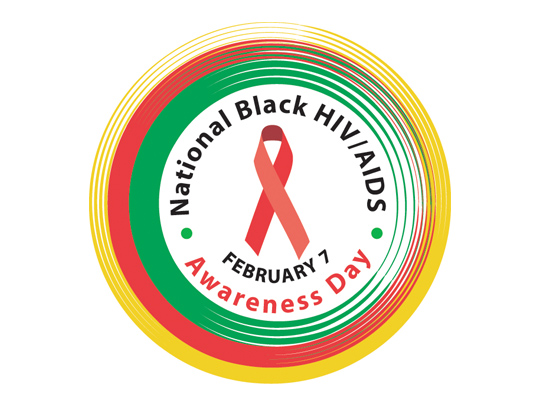Dear Colleague: Information from CDC's Division of HIV/AIDS Prevention
Topics

Cross-posted from Centers for Disease and Control
Dear Colleague,
Today is National Black HIV/AIDS Awareness Day (NBHAAD), a day to acknowledge progress in reducing HIV infections and their consequences in African American communities and renew our commitment to the remaining work. This week, the President announced during the State of the Union address: Now is the time to end the HIV epidemic in America. We are excited by the Administration’s proposed multi-year initiative. Right now we have access to the most powerful HIV prevention and treatment tools in history, and our goal is ambitious and the pathway is clear—employ strategic practices in the right places focused on the right people. On NBHAAD, we recognize our continued commitment to reduce disparities, prevent new HIV infections, and help African Americans with HIV live long, healthy lives. This new initiative will strengthen our efforts to get this done.
There has been some success. New HIV diagnoses declined among African American women (25%) and heterosexual men (26%) from 2010 to 2016, but they were stable among African American gay and bisexual men. African Americans continue to be disproportionately affected by HIV, accounting for 13% of the U.S. population but 43% of the 38,739 diagnoses in the U.S. and 6 dependent areas in 2017.
This year’s NBHAAD theme is Together for Love: Stop HIV Stigma. HIV stigma affects health outcomes for African Americans with HIV and impedes testing and prevention efforts. Reducing stigma and increasing the number of African Americans accessing HIV testing, prevention, and treatment services will require all of us working together. Everyone has a role to play. Prevention partners and community leaders can educate their communities about stigma and ways to address it. Providers can ensure all patients are tested for HIV and offer supportive care that improves health outcomes for patients with HIV and helps them maintain viral suppression. People with HIV who take antiretroviral therapy (ART) as prescribed and achieve and maintain viral suppression can stay healthy and have effectively no risk of transmitting HIV to their HIV-negative sex partners. Finally, everyone can know the facts and educate others about HIV stigma.
Reducing stigma is a priority for CDC, and we have many resources available for you to join us in our efforts:
- The Let’s Stop HIV Together campaign raises awareness about everyone’s role in stopping HIV stigma. You can learn about stigma, share video storiesabout lives touched by HIV, and get campaign materials.
- CDC’s NBHAAD site contains additional educational resources you can use to raise awareness about and combat stigma.
In addition to reducing stigma, we can work together to ensure that all African Americans have access to effective HIV prevention and treatment options, including pre-exposure prophylaxis (PrEP) for people at high risk for HIV and ART for people who have HIV. We can also increase HIV testing among African Americans so new infections can be diagnosed early and people with HIV can protect their health and their partners. A study released last week highlights the value of partner services for increasing early diagnosis and improving health outcomes among African Americans. Health professionals can offer partner services to people who receive an HIV diagnosis and their sex or syringe-sharing partners, who are notified of their potential HIV exposure and offered HIV testing and related services.
Some of CDC’s activities to address HIV among African Americans include:
- Funding for state and local health departments to support HIV surveillance and prevention programs across the United States, as well as interventions that reach the populations most affected by HIV, including African Americans.
- Funding for community-based organizations to implement comprehensive HIV prevention programs for young gay and bisexual men of color and young transgender persons of color.
- A new cooperative agreement in 2019 to strengthen the capacity and improve the performance of the nation��’s HIV prevention workforce. One goal of this agreement is reducing HIV-related health disparities.
- The Act Against AIDS campaigns and partnerships, including:
- Start Talking. Stop HIV., which helps gay and bisexual men communicate about HIV prevention.
- Doing It, a campaign that encourages all adults to get tested for HIV.
- HIV Treatment Works, which encourages people with HIV to get in care, stay in care, and live well.
- Campaigns to help providers offer supportive, patient-centered HIV testing, prevention, and treatment services: HIV Screening. Standard Care., Prescribe HIV Prevention, Transforming Health, and Prevention Is Care.
- Partnering and Communicating Together (PACT) to Act Against AIDS, a partnership with organizations such as the National Urban League and the National Black Justice Coalition to raise awareness among the populations most affected by HIV.
Together we are making a difference by supporting and implementing proven, effective prevention strategies to reach African Americans most at risk for HIV, help those with HIV stay healthy, and reduce the stigma that remains a barrier to stopping HIV in the United States. In the coming months, you will hear more about the proposed initiative to end HIV in America and will have opportunities to engage and provide input. For this effort to be successful, we will need strong vision and commitment from you to join us in this fight to end the HIV epidemic in America.
We thank you for being together with us to achieve no new HIV infections in our lifetime.
Sincerely,
/Eugene McCray/
Eugene McCray, MD
Director
Division of HIV/AIDS Prevention
National Center for HIV/AIDS, Viral Hepatitis, STD, and TB Prevention
Centers for Disease Control and Prevention
www.cdc.gov/hiv
/Jonathan Mermin/
Jonathan H. Mermin, MD, MPH
RADM and Assistant Surgeon General, USPHS
Director
National Center for HIV/AIDS, Viral Hepatitis, STD, and TB Prevention
Centers for Disease Control and Prevention
www.cdc.gov/nchhstp